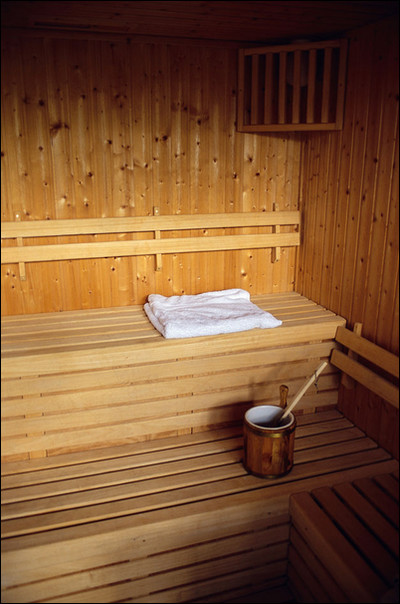I’ve been putting in the hours at the gym sauna lately, committed as I am to shedding my person of built-up toxins.
The sauna at my gym can best be described as “traditional,” with a heating element covered in rocks to help heat the room. It’s comfortable (if a room heated to 150 degrees can be described thusly) and seats 6, but every time I’m in it and the traffic is coming and going I fantasize about having my own.
Coincidentally last weekend saw me strolling up and down the aisles at the New England Home Show in Boston and turn in at the Health Mate booth, where I was given a short education on the differences in the many infrared sauna systems available on the market.
Here’s one thing I didn’t know: In a traditional sauna the sweat produced by the body is 97% water and 3% waste. In an infrared sauna those numbers are 80% water and 20% waste. I also found out that near and middle infrared wavelengths are ineffective on the human body, so a far infrared heater that emits the far infrared evenly is something to look for. Here’s where it gets interesting. A consumer really has to look at the claims made by any given sauna, particularly when it comes to the microns it claims to emit. A far infrared sauna that claims to emit, say, 9 to 14 microns might be fibbing, as the heater would have to be at a temperature of 100 degrees or lower to emit 9 microns. 100 degrees isn’t hot enough to get a person to sweat, so the literature could be intentionally misleading, preying upon those consumers who think more is more.
Bottom line: do your research before making this purchase (which can be fairly substantial.) Here’s a short article on saunas to get you on your way.




























